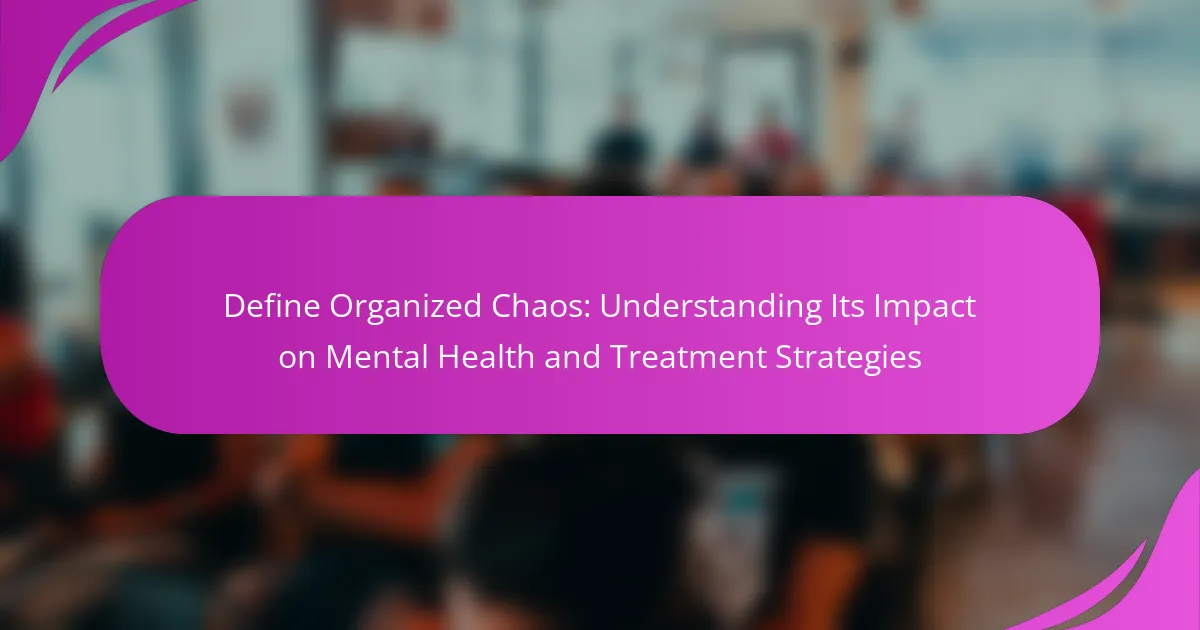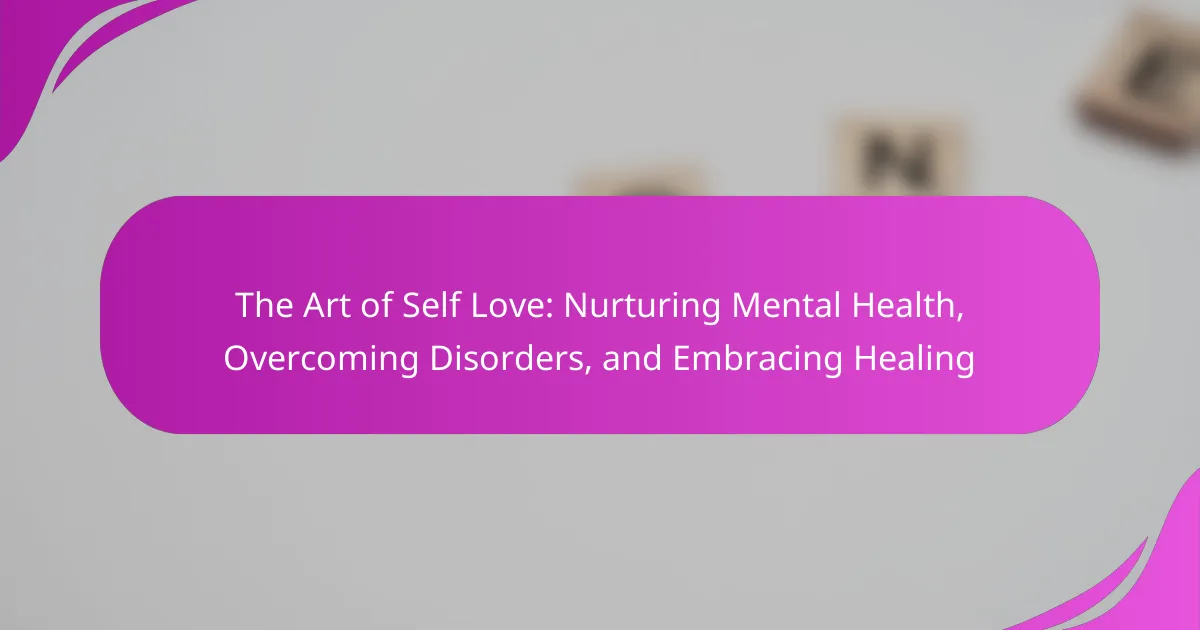Automated business ideas for mental health treatment offer innovative solutions that enhance accessibility and engagement for clients. Key approaches include teletherapy platforms, AI-driven chatbots, mobile wellness apps, and virtual support groups. These tools improve client reach, provide 24/7 support, and foster community connections. However, successful implementation requires attention to user experience, data security, and integration with existing systems.
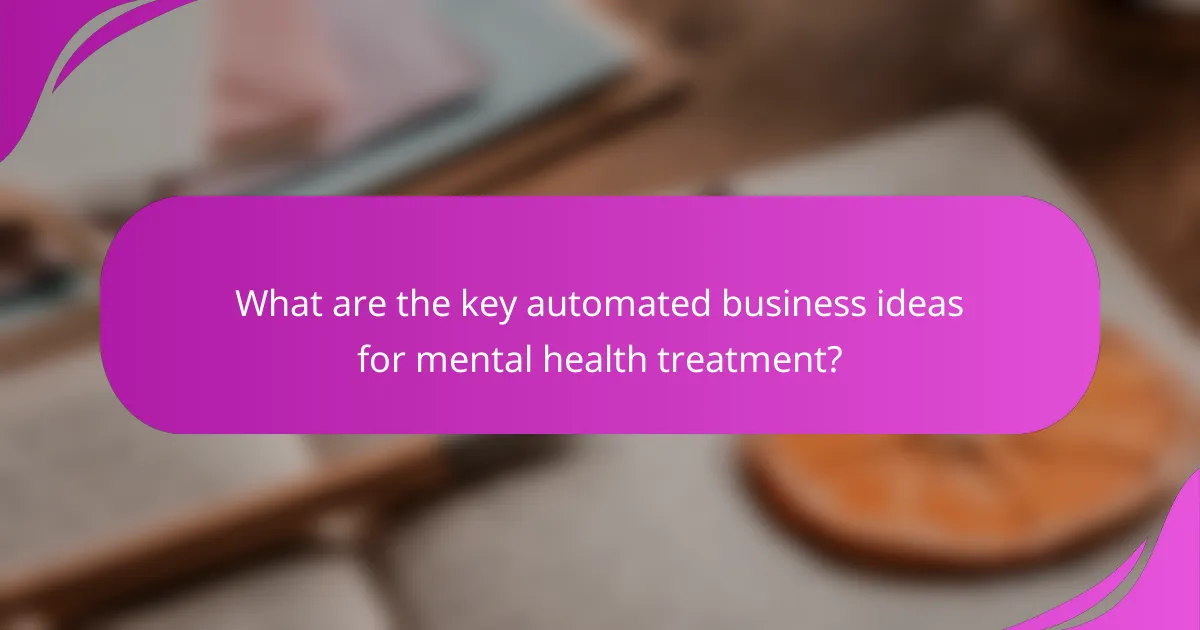
What are the key automated business ideas for mental health treatment?
Automated business ideas for mental health treatment include teletherapy platforms, AI-driven chatbots, mobile wellness apps, and virtual support groups. These solutions enhance accessibility and engagement for clients.
Teletherapy platforms offer real-time consultations, improving client reach and convenience. AI-driven chatbots provide 24/7 support, assisting with immediate concerns and guiding users to resources. Mobile wellness apps track mental health progress and offer personalized strategies, fostering self-management. Virtual support groups create community connections, reducing isolation among participants.
These automated solutions address the growing demand for mental health services while optimizing the workflow for wellness professionals.
How can technology enhance therapeutic practices?
Technology can significantly enhance therapeutic practices by streamlining processes and improving client engagement. Automated solutions, such as teletherapy platforms, allow mental health professionals to reach clients more efficiently. These platforms offer features like scheduling, reminders, and secure messaging, which enhance communication and accessibility.
Additionally, data analytics tools can track client progress and outcomes, providing insights that inform treatment plans. By leveraging artificial intelligence, therapists can gain personalized recommendations based on client data, leading to more tailored interventions. Virtual reality therapy presents a unique attribute by creating immersive environments for exposure therapy, which can facilitate desensitization to anxiety-inducing stimuli.
Incorporating these innovative solutions not only saves time but also improves the overall quality of care provided to clients. As a result, wellness professionals can focus more on therapeutic relationships and less on administrative tasks.
What role do telehealth platforms play in mental health?
Telehealth platforms significantly enhance mental health treatment by providing accessible, flexible care options. They enable wellness professionals to reach clients remotely, facilitating timely interventions and ongoing support. This approach is particularly beneficial for individuals in underserved areas, reducing barriers to access. Moreover, telehealth platforms often incorporate unique features, such as secure messaging and virtual therapy sessions, which cater to diverse client needs. As a result, these platforms play a crucial role in modern mental health care delivery, promoting better outcomes for patients.
Which telehealth tools are most effective for wellness professionals?
Telehealth tools like video conferencing, secure messaging, and online scheduling are effective for wellness professionals. These tools enhance client engagement and streamline communication.
Video conferencing allows for real-time interactions, fostering a personal connection. Secure messaging ensures confidentiality, crucial for mental health discussions. Online scheduling simplifies appointment management, improving efficiency.
Using integrated platforms can centralize these functions, offering a seamless experience for both clients and practitioners. For example, tools like Doxy.me and SimplePractice combine multiple features, enhancing overall service delivery.
Investing in these telehealth tools can significantly improve treatment outcomes and client satisfaction, making them essential for modern wellness practices.
What are the benefits of automated appointment scheduling systems?
Automated appointment scheduling systems enhance efficiency for wellness professionals by streamlining client interactions. They reduce no-shows by sending reminders, allowing for better time management. These systems also improve client satisfaction through easy access to booking, leading to increased retention rates. Additionally, they provide valuable analytics on appointment trends, helping professionals optimize their schedules.
How do these systems improve client engagement?
Automated systems enhance client engagement by providing timely support, personalized interactions, and continuous feedback. These systems facilitate real-time communication, allowing mental health professionals to respond quickly to client needs. They also offer tailored resources based on individual client profiles, improving relevance and effectiveness of treatment. Additionally, automated reminders and follow-ups encourage consistent participation, fostering a stronger therapeutic relationship. Overall, these innovative solutions streamline processes, making client engagement more efficient and impactful.
What unique features can automated mental health apps offer?
Automated mental health apps can offer unique features such as personalized therapy sessions, real-time mood tracking, and AI-driven insights. These features enhance user engagement and provide tailored support. Personalized therapy sessions adapt to individual needs, while real-time mood tracking allows users to monitor emotional patterns. AI-driven insights analyze user data to suggest coping strategies. These innovations empower wellness professionals to improve treatment outcomes effectively.
How can AI-driven chatbots support mental health treatment?
AI-driven chatbots can enhance mental health treatment by providing immediate support and resources. They offer 24/7 availability, allowing users to access assistance anytime. Chatbots can facilitate self-assessment, guiding users through symptoms and suggesting coping strategies. They also provide personalized interactions, adapting to individual needs, which can improve user engagement. Furthermore, chatbots can collect data on user interactions, helping professionals track progress and tailor interventions. These innovative tools serve as a valuable supplement to traditional therapy, making mental health support more accessible.
What personalized wellness plans can be created through automation?
Automated systems can create personalized wellness plans by analyzing individual data and preferences. These plans often include tailored exercise routines, nutrition guidelines, and mental health resources. Automation enhances efficiency by providing real-time adjustments based on user feedback and progress tracking. This approach ensures that wellness professionals can offer unique, data-driven solutions that cater to each client’s specific needs.
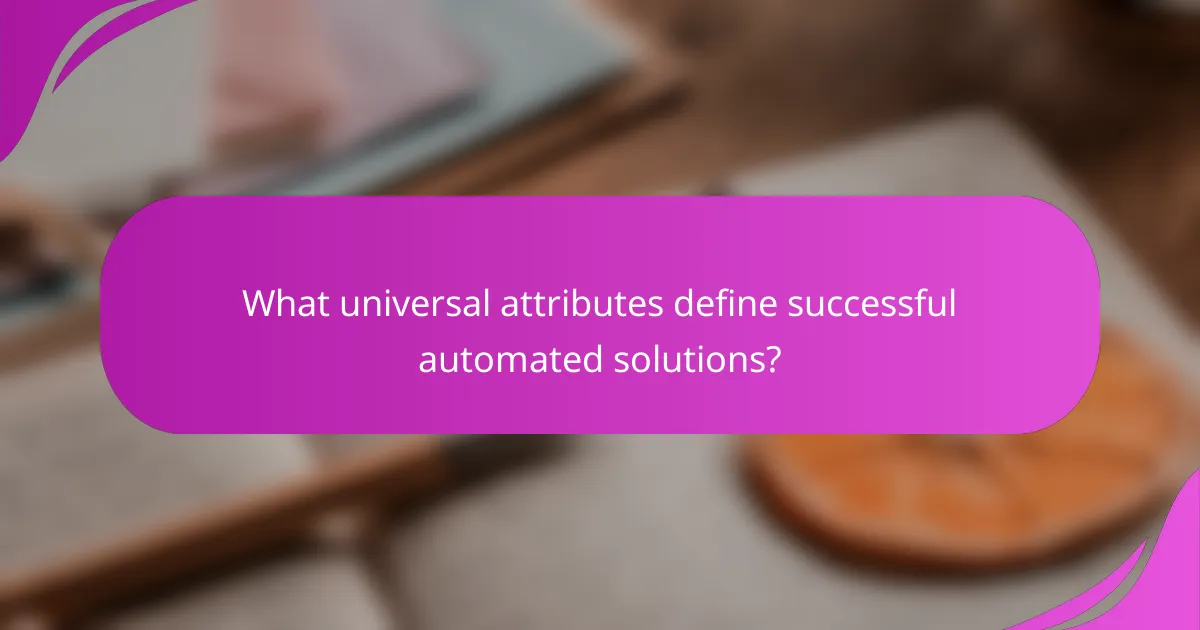
What universal attributes define successful automated solutions?
Successful automated solutions for mental health treatment share universal attributes such as scalability, user-friendliness, and data-driven insights. Scalability allows these solutions to adapt to varying client needs without compromising quality. User-friendliness ensures that both wellness professionals and clients can easily navigate the technology. Data-driven insights provide actionable feedback that enhances treatment effectiveness, enabling professionals to make informed decisions. Together, these attributes foster improved mental health outcomes and operational efficiency for wellness providers.
How do user-friendly interfaces impact client satisfaction?
User-friendly interfaces significantly enhance client satisfaction by promoting ease of use and accessibility. When clients can navigate mental health treatment platforms effortlessly, their engagement and trust in the service increase. A study found that 85% of users prefer intuitive designs, leading to higher retention rates. Moreover, streamlined interfaces reduce frustration, allowing clients to focus on their wellness journey. As a result, wellness professionals can foster stronger client relationships and improve overall treatment outcomes.
What data security measures are essential for mental health tools?
Essential data security measures for mental health tools include encryption, access controls, and regular audits. Encryption protects sensitive data during transmission and storage. Access controls limit user permissions, ensuring only authorized personnel can access private information. Regular audits identify vulnerabilities and ensure compliance with regulations like HIPAA. These measures enhance trust and safeguard client confidentiality.
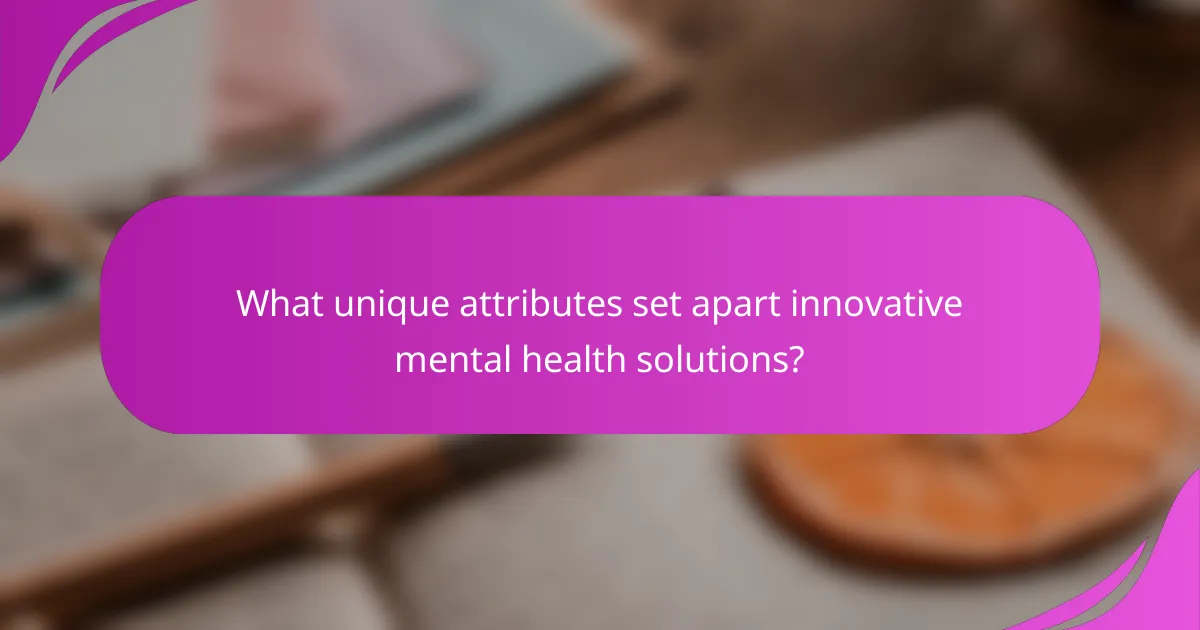
What unique attributes set apart innovative mental health solutions?
Innovative mental health solutions stand out through their unique attributes, such as personalized algorithms, real-time data analysis, and enhanced user engagement. These features allow for tailored treatment plans, improving patient outcomes significantly. Additionally, integration with wearable technology provides unique insights into user behavior, fostering proactive mental health management. The use of artificial intelligence in these solutions enables continuous learning and adaptation, ensuring relevance and effectiveness in a rapidly changing environment.
How does integration with existing healthcare systems enhance effectiveness?
Integration with existing healthcare systems significantly enhances the effectiveness of automated business ideas for mental health treatment. It streamlines data sharing, improves patient outcomes, and facilitates comprehensive care. By connecting with electronic health records, professionals gain access to vital patient history, leading to more informed treatment decisions. This integration fosters collaboration among providers, ensuring a holistic approach to mental health. Moreover, it supports the unique attribute of personalized care, tailoring interventions to individual needs based on real-time data. Enhanced communication between systems ultimately leads to better resource allocation and increased operational efficiency.
What customization options are available for automated tools?
Automated tools for mental health treatment offer several customization options. Users can tailor features such as user interface design, therapy modalities, data analytics, and reporting capabilities to suit their specific practice needs.
Customization options include personalized branding, integration with existing software, adjustable session lengths, selection of therapeutic approaches, and client feedback mechanisms. These features enhance user experience and improve client engagement.
Moreover, some tools allow for unique attributes like multilingual support or customizable therapeutic content. These options ensure that wellness professionals can adapt the tools to their diverse clientele effectively.
As a result, the flexibility in customization contributes to better treatment outcomes and enhanced operational efficiency for mental health professionals.
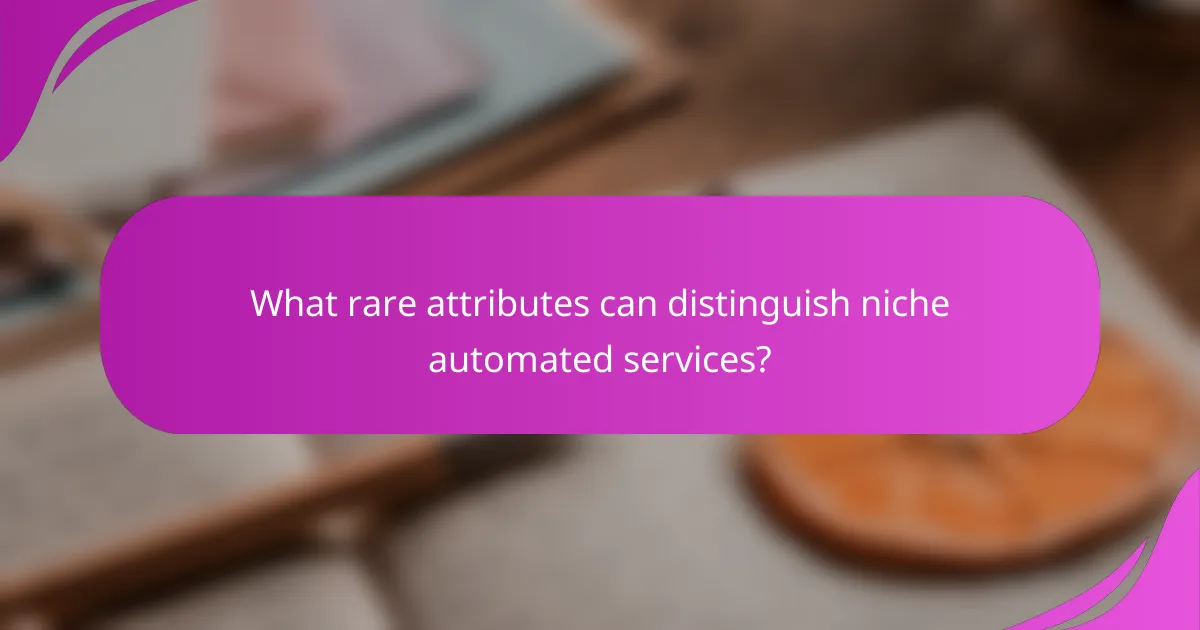
What rare attributes can distinguish niche automated services?
Niche automated services for mental health treatment can be distinguished by their unique attributes, such as personalized AI-driven therapy, real-time data analytics, and integration with wearable health technology. These attributes enhance user engagement and treatment effectiveness. Additionally, services that offer multilingual support and culturally tailored content stand out in a diverse market. The ability to provide automated follow-ups and reminders for appointments is another rare attribute that improves client adherence to treatment plans.
How can automated services cater to underserved populations?
Automated services can effectively address the needs of underserved populations by providing accessible mental health treatment options. These services reduce barriers to care, such as transportation and stigma, enabling individuals to receive support from the comfort of their homes.
Innovative solutions like teletherapy platforms and AI-driven chatbots offer personalized mental health resources. For instance, these tools can provide immediate assistance, schedule appointments, and facilitate ongoing communication with wellness professionals.
Statistics show that underserved communities often lack access to traditional mental health services, with over 60% of individuals not receiving necessary care. Automated services bridge this gap by delivering timely interventions and educational resources tailored to specific demographic needs.
As a result, wellness professionals can expand their reach and impact, ensuring that mental health treatment is equitable and inclusive for all populations.
What emerging technologies are shaping the future of mental health treatment?
Automated business ideas are revolutionizing mental health treatment through technologies like AI-driven therapy, telehealth platforms, and mental wellness apps. These innovations enhance accessibility, personalization, and efficiency in care delivery. AI algorithms analyze patient data to provide tailored interventions, while telehealth expands reach to underserved populations. Mental wellness apps offer self-help tools, fostering proactive engagement in mental health. As a result, these emerging technologies are shaping a more responsive and effective mental health landscape.
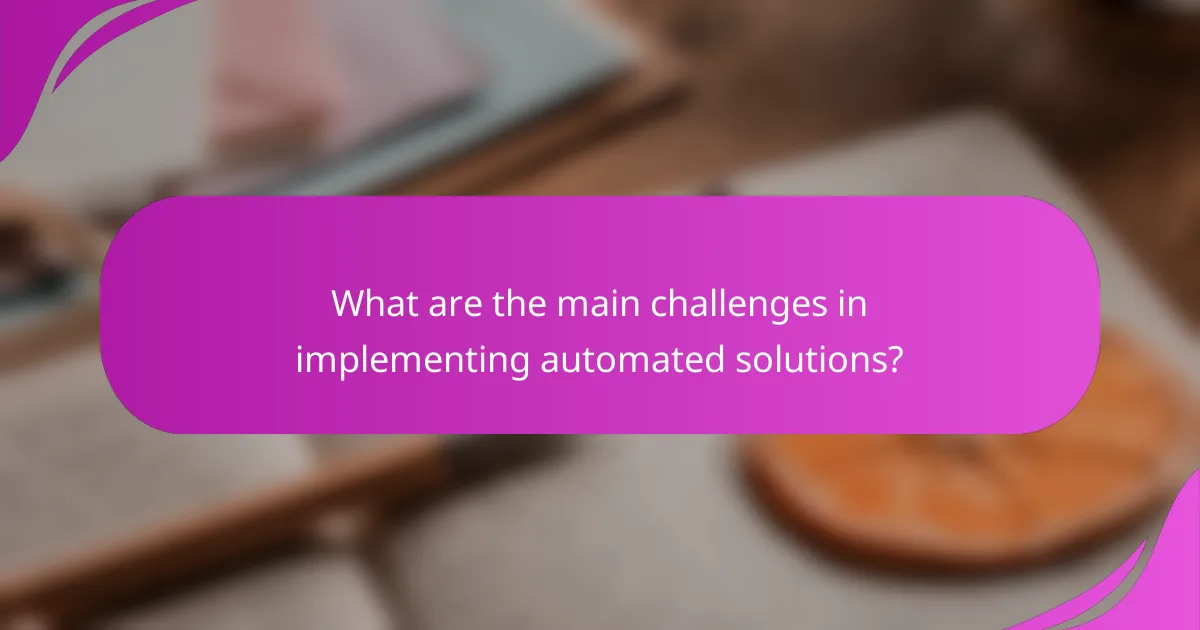
What are the main challenges in implementing automated solutions?
Implementing automated solutions in mental health treatment faces several challenges. Key issues include integration with existing systems, ensuring data privacy, and addressing resistance from professionals.
Integration involves aligning new technologies with current workflows, which can disrupt established practices. Data privacy is critical, as sensitive patient information must be protected, requiring compliance with regulations. Resistance from professionals may stem from concerns over job security or skepticism regarding technology’s effectiveness.
Additionally, training staff to use automated solutions effectively is essential for successful implementation. This challenge is compounded by the need for ongoing support and updates to technology.
What common misconceptions exist about automated mental health treatment?
Many misconceptions exist about automated mental health treatment, including doubts about effectiveness and personalization. Some believe these solutions lack human empathy, while others question their ability to address complex mental health issues. Critics often overlook advancements in AI that enhance user experience and outcomes. Additionally, concerns about data privacy can deter potential users, despite stringent security measures in place. Understanding these misconceptions is crucial for wellness professionals to effectively implement automated solutions.
How can wellness professionals overcome resistance to technology?
Wellness professionals can overcome resistance to technology by emphasizing benefits and providing training. Highlighting improved patient outcomes and efficiency can motivate adoption. Continuous support and addressing concerns about technology usability are essential. Engaging clients through user-friendly platforms fosters acceptance and enhances treatment experiences.
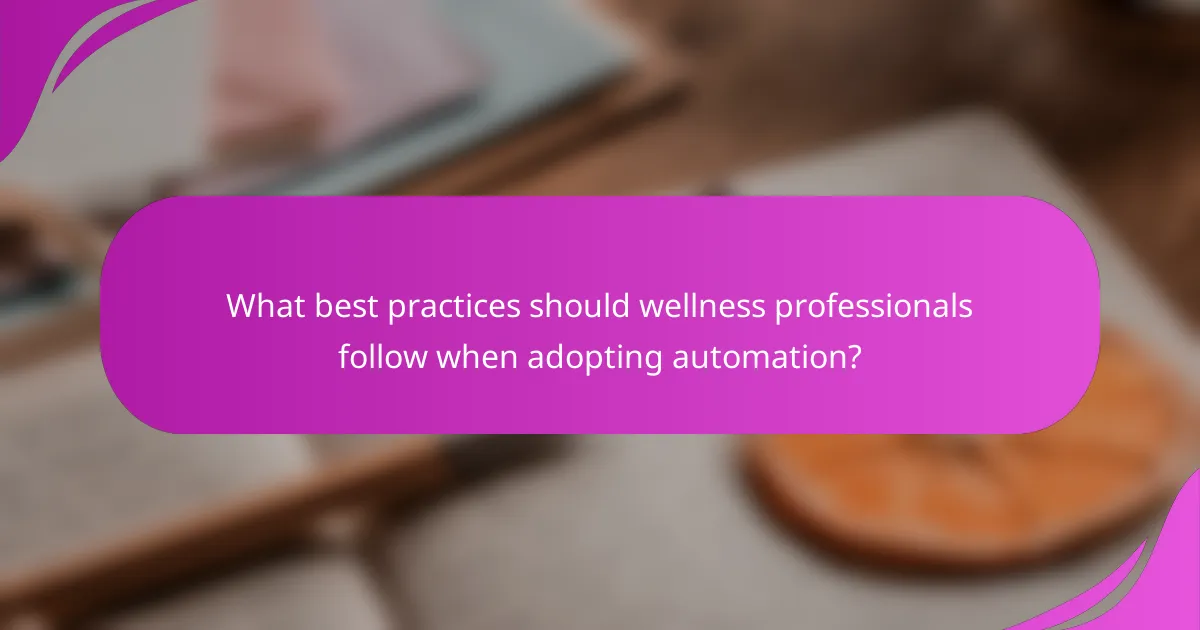
What best practices should wellness professionals follow when adopting automation?
Wellness professionals should prioritize user experience, data security, and integration with existing systems when adopting automation. Establish clear goals for automation to enhance efficiency and client engagement. Regularly evaluate the effectiveness of automated solutions to ensure they meet the needs of both professionals and clients. Training staff on new technologies fosters a smooth transition and maximizes the benefits of automation.
How can practitioners ensure compliance with regulations?
Practitioners can ensure compliance with regulations by implementing automated systems for monitoring and reporting. These systems can streamline documentation processes, ensuring that all necessary records are maintained accurately and are easily accessible for audits. Regular training on regulatory updates for staff is essential, as it fosters a culture of compliance. Utilizing technology for data security also protects client information, a critical aspect of regulatory adherence. Automated reminders for policy updates can further enhance compliance efforts.
What are the most common mistakes to avoid when integrating technology?
To successfully integrate technology into mental health treatment, avoid common mistakes that can hinder effectiveness. Prioritize user needs and ensure thorough training for staff.
Neglecting user feedback can lead to technology that does not meet client expectations. Failing to assess the compatibility of new tools with existing systems may cause disruptions. Overlooking data privacy and security can jeopardize client trust. Lastly, not setting clear objectives can result in wasted resources and ineffective solutions.
What strategies can enhance client trust in automated services?
To enhance client trust in automated services, prioritize transparency, responsiveness, and personalization. Clear communication about data usage builds trust. Implementing real-time support options fosters reliability. Tailoring services to individual needs demonstrates commitment to client well-being. Regular feedback loops improve service quality and client satisfaction.
